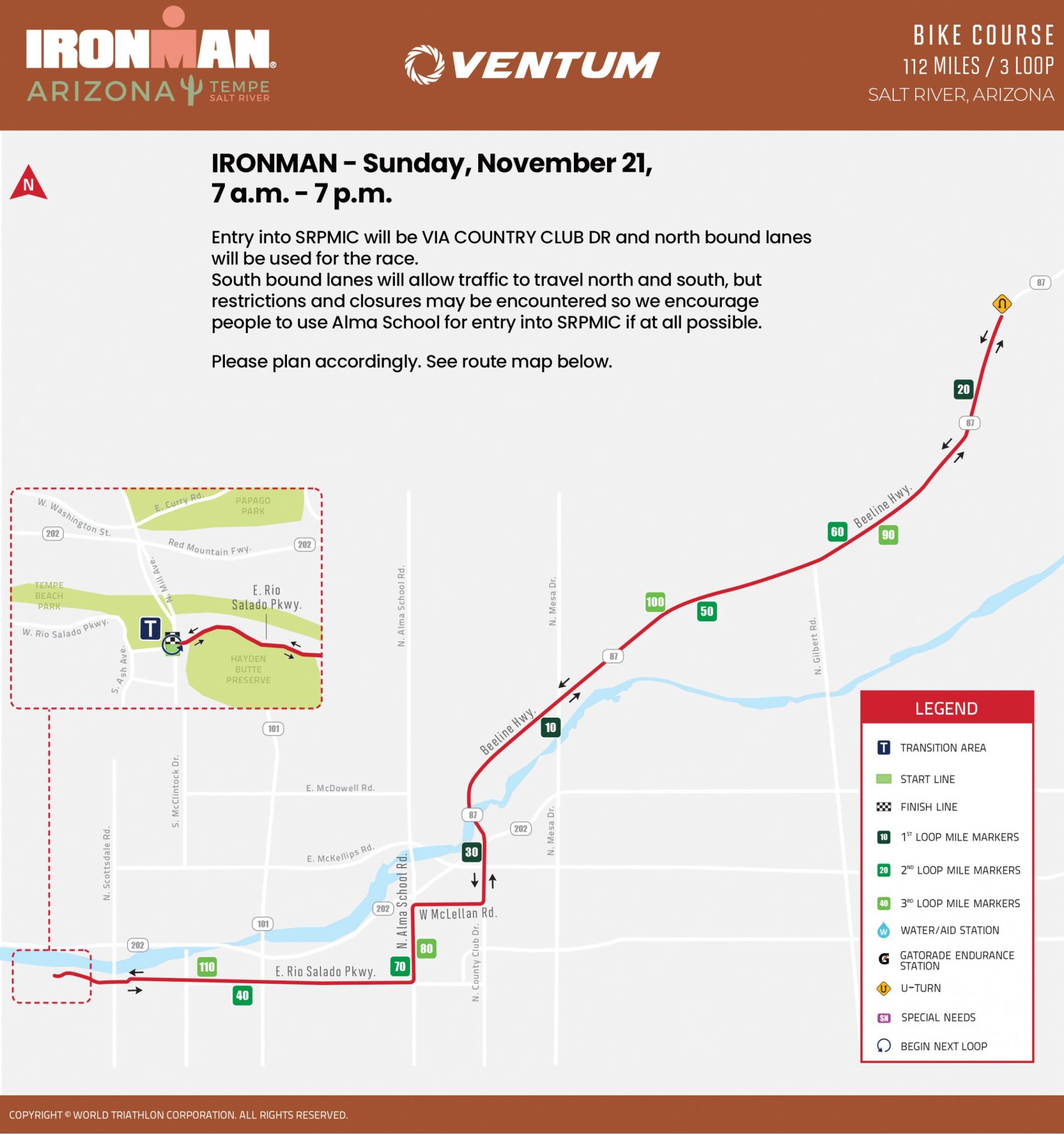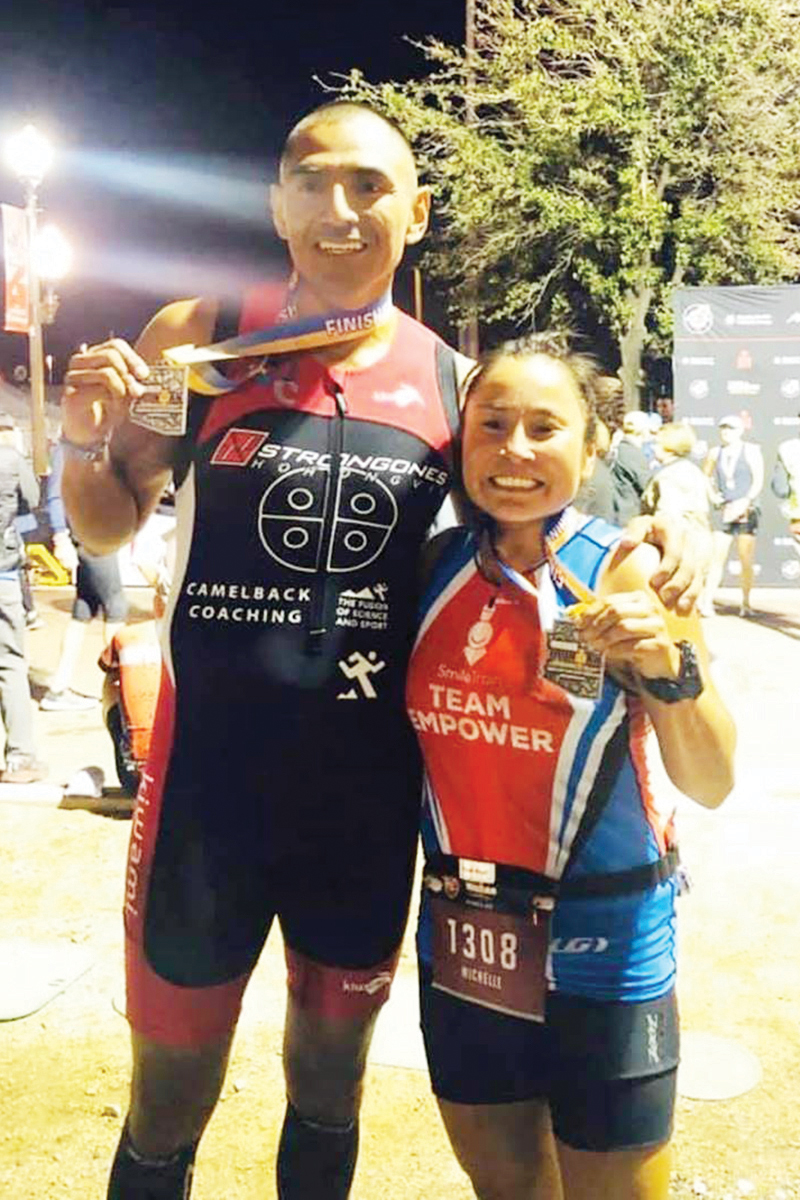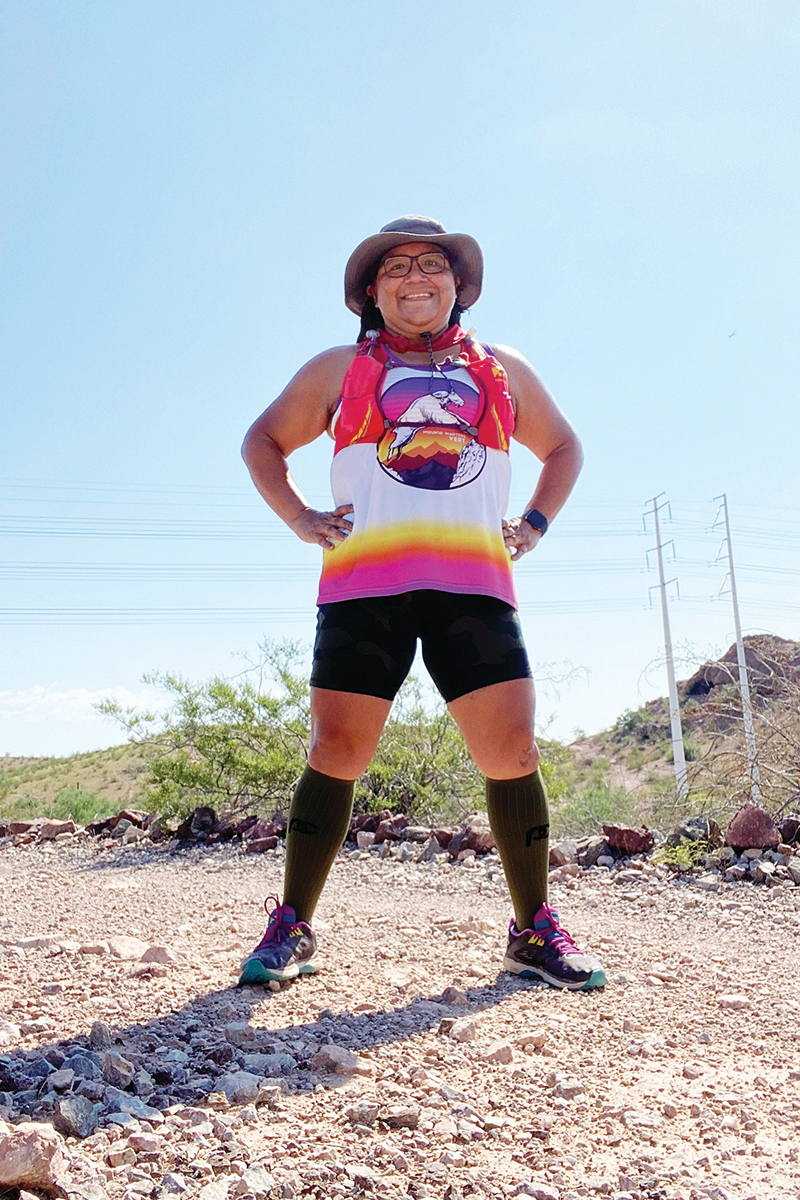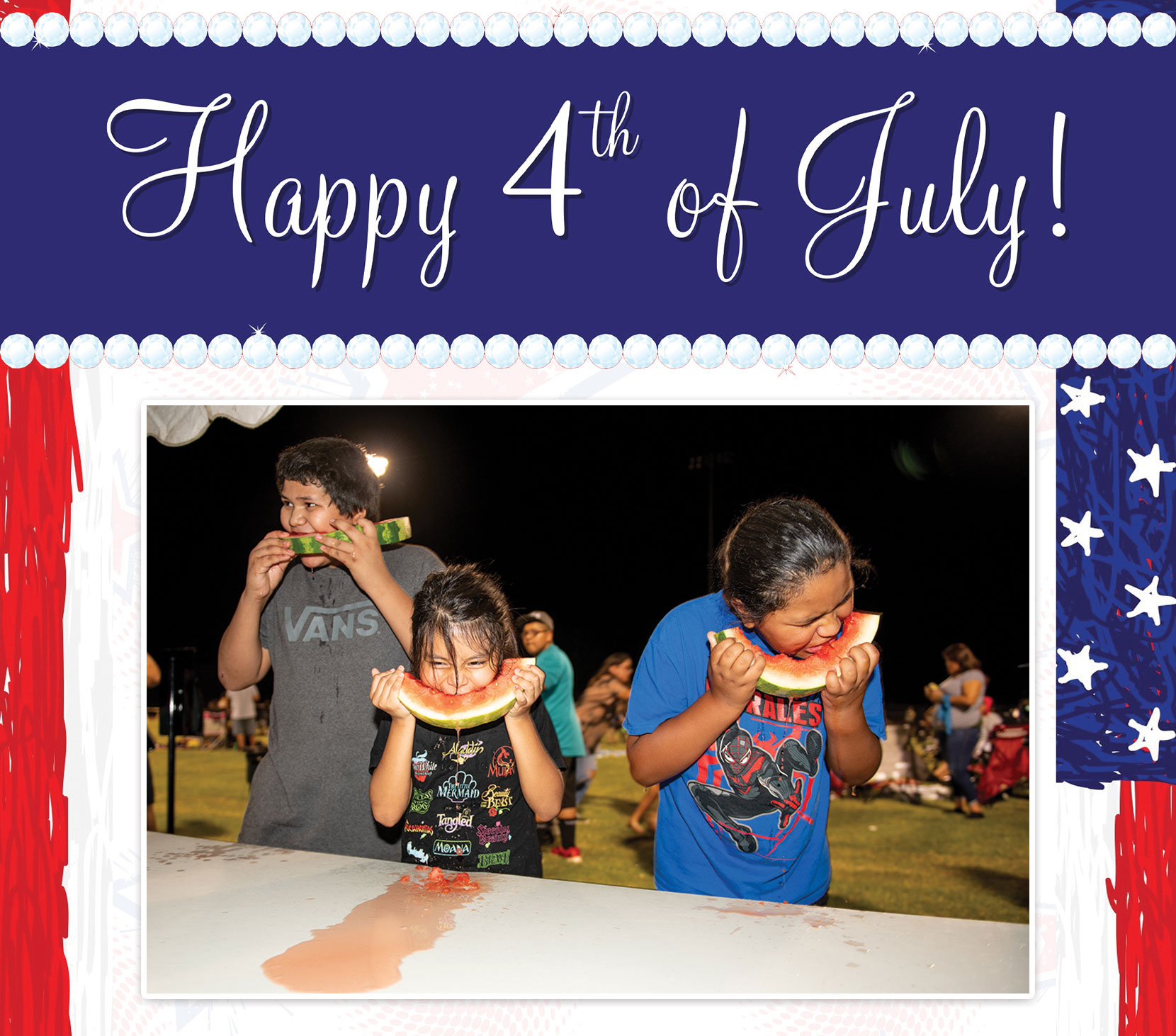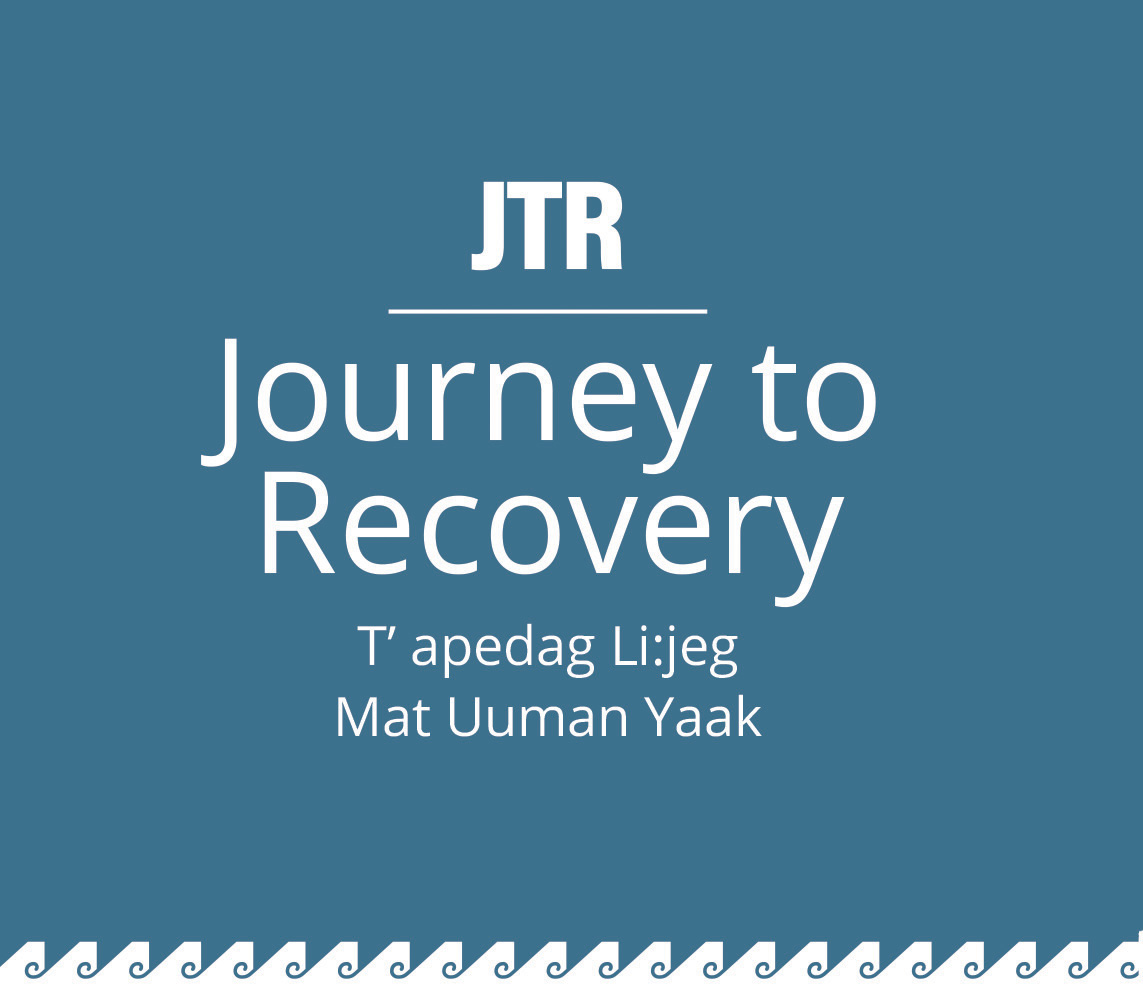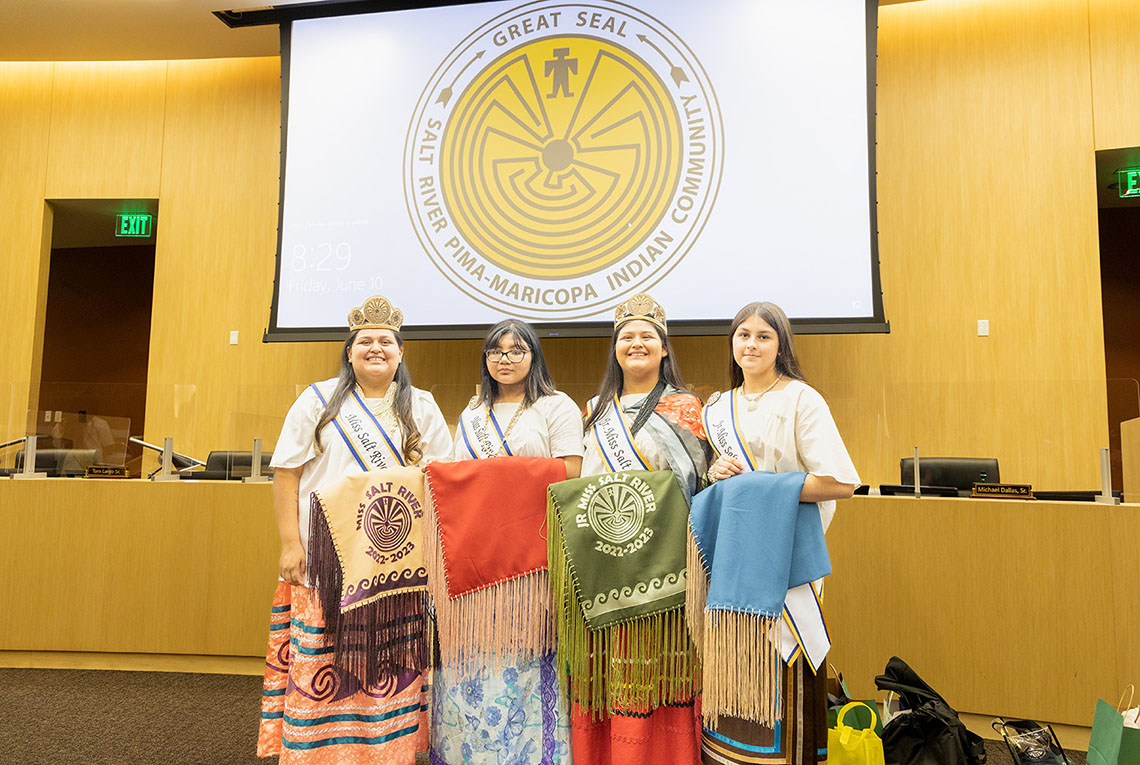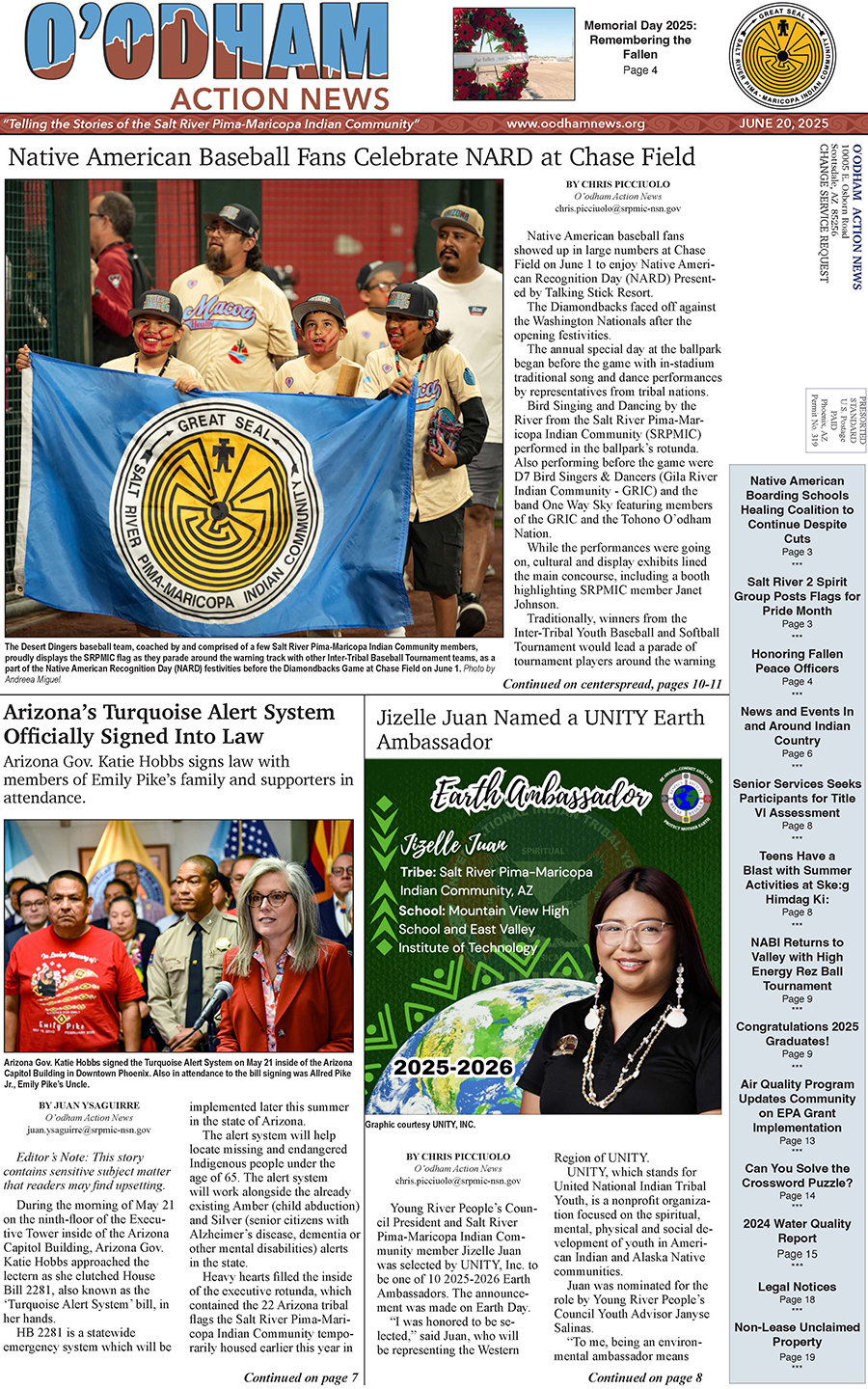VIEWS: 2464
November 4, 2021Three SRPMIC Relay Teams to Compete in Ironman Arizona
In August, the Salt River Pima-Maricopa Indian Community Council renewed the Community’s partnership with the Triathlon Corporation/Ironman for the next three years. This allows the route of the Ironman Arizona bicycle portion to continue to pass through the Community. This year there is a change to the route; they are eliminating the use of McKellips Road, but they will continue to use Beeline Highway starting at the Country Club Drive Bridge to Beeline Highway to the border of the Community near Fountain Hills. The event will take place on November 21, so please plan accordingly.
This year, three Community-based relay teams will be competing. Each team consists of a swimmer, biker and runner and includes one SRPMIC member, one tribal employee and one Salt River Triathlete.
Relay Team 1
Fantasia Painter
(Community member), swim
MaLorie Charley-Krause
(Salt River Triathlete), bike
Caroline Sekaquaptewa
(SRPMIC Tribal Employee), run
Relay Team 2
Michelle Roan
(SRPMIC Tribal Employee), swim
Shashani Marcus
(Community member), bike
Felicia Sekaquaptewa
(Salt River Triathlete), run
Relay Team 3
Wayne Sekaquaptewa
(SRPMIC Tribal Employee), swim
David Brown
(Salt River Triathlete), bike
Rachel Seepie
(Community member), run
We caught up with three of the participants for a Q&A to ask about their participation in the Ironman Arizona Triathlon.
Good luck to all the relay teams! For more information about the Ironman Arizona Triathlon, visit www.ironman.com/im-arizona.
Fantasia Painter
(Swimmer)
Q: What inspired you to join an Ironman relay team?
It is an honor and privilege to swim for the Community relay team. I feel very lucky to be able to do it. As to what inspires me, there are a lot of strong, smart and capable Indigenous women in our Community. My grandmother Monica Shaw, who is certainly among them, participated in the relay on the bike in 2014, and at the end of the day I’m just trying to keep up with her.
Q: Is this your first time participating in the Ironman Triathlon? If not, how many times have you participated and how did you do?
This is my second time participating in the relay. I also did the swim in 2019. I came in at just over 86 minutes. My hope for this year is to make it in around 86 minutes again.
Q: What made you decide to do the swimming part of the relay?
I think the swim is the easiest of the three events. It’s the shortest time-wise. My great-grandfather used to say that the O’odham were strong runners and the Piipaash were strong swimmers. Maybe I’m connecting with my Piipaash side.
Q: How did you prepare/train for the triathlon?
Well, I swim a lot. They say that practice makes progress. I do three short swims and one long swim every week. Besides training, I watch a lot of YouTube. My grandmother says you can learn anything on YouTube, and I have definitely gotten a lot of tips on swimming drills and technique on there.
Q: Which is the most difficult part of preparing for the competition, the physical or mental part?
Mental. It takes a lot of consistency. A lot of people could swim 2.4 miles. But not everyone has the ability or commitment to train every week for 10 weeks.
Q: What advice would you give to those who may be interested in participating in an Ironman?
Do it! Whether you choose the swim, bike or run, do it. The race itself and the training leading up to it is an incredible experience. Start small and build up. We are capable of so many great and impressive things. It just takes that first step. You will meet a whole bunch of Native folks putting in the miles (one way or another) along the way. Plus, you get a free t-shirt!
Michelle Roan
(Swimmer)
Q: What inspired you to join an Ironman relay team?
I enjoy triathlons. In the sport of triathlons, there is minimal American Indian/Native American participation. The SRPMIC is fortunate to expose their Community members and allow other Native Americans to participate as well. The enjoyment of triathlons and participating with other American Indians/Native Americans makes participating in a huge, worldwide, well-known event such as Ironman worthwhile.
Q: Is this your first time participating in the Ironman Triathlon? If not, how many times have you participated and how did you do?
I have completed one individual Ironman, in 2019. Overall, I did well and enjoyed the day.
Q: What made you decide to do the swimming part of the relay?
Running is my favorite of the triathlon, so I wanted to challenge my comfort zone with the 2.4-mile open-water swimming distance.
Q: How did you prepare/train for the triathlon?
I like to follow a training plan provided by Camelback Coaching. It helps me stay on track. I also meet up with friends for runs, biking and swimming because the support helps during long training hours.
Q: Which is the most difficult part of preparing for the competition, the physical or mental part?
I personally think mental preparation is most difficult. For me, I get caught up in negative thinking, comparing myself to others, and on the physical discomfort, especially when I am tired. I try to use training time to mentally prepare for what I may experience mentally during the event.
Q: What advice would you give to those who may be interested in participating in an Ironman?
Get involved with a good supportive running/biking/swimming triathlon group. Although a triathlon is an individual event, the support from others will help your development physically and mentally. Plus, it makes training fun.
Q: Is there anything else you would like to add?
Thank you, SRPMIC, for continuing to support Native American representation in Ironman.
Rachel Seepie
(Runner)
Q: What inspired you to join an Ironman relay team?
I was inspired to join a relay team because it gives me the opportunity to hopefully inspire future individuals who want to do a marathon (26.2 miles), which is the distance I will be running/walking as a part of the relay team. You are never too old to start running or walking a marathon distance.
Q: Is this your first time participating in the Ironman Triathlon? If not, how many times have you participated and how did you do?
This not my first time participating on the relay team for Salt River. I have been on the relay team as the swimmer twice, completing both 2.4-mile [swims], and I was once down for the bicycle portion but did not make it on to the course. This will be my first time taking part as the runner on a relay team. I have participated in the Ironman Arizona four times: I completed three races but did not finish one.
Q: What made you decide to do the running part of the relay?
I have been doing a lot of running and walking through 2020 and 2021 during the COVID-19 pandemic, and I believe I will be ready for the 26.2-mile distance. It’s been four years since my last marathon distance.
Q: How did you prepare/train for the triathlon?
As I mentioned, during 2020 and 2021 I have been doing more running and walking here around Salt River and other outdoor locations in the Valley. What kept me going was joining a private Facebook group, the 100 Mile Challenge. The goal in the group was accumulate 100 miles each month, which I accomplished several times. The group was put together by Sam Taylor (a Hopi runner), and the majority of the group participants are Native Americans. I’m still in the group because everyone is inspiring and it keeps me motivated to continue running or walking.
Q: Which is the most difficult part of preparing for the competition, the physical or mental part?
I find the most difficult part of preparing for race is the mental part. If you’re not mentally prepared, then your body will not be ready for the competition.
Q: What advice would you give to those who may be interested in participating in an Ironman?
Some advice I have given in the past is to start small. That is, get prepared in smaller races before jumping into the Ironman distance. There are mini triathlons, sprint triathlons, Olympic distance and half-Ironman distances. What I find helps is incorporating strength training, functional training and yoga two to three times a week. The strength training doesn’t have to be hardcore heavy lifting. Investing in a decent road bike is good, and if you have the means, hire a triathlon coach who can help with swimming, cycling and running techniques. Find people who are involved in triathlons. Don’t be afraid to ask them questions about how they got started.

